- Bohor B.F., Foord E.E., Modreski P.J. (1985). Extraterrestrially-derived magnesioferrite at the K-T boundary, Caravaca, Spain. Lunar and Planet. Sci. Vol. 16: Abstr. Pap. 16th Conf., March 11-15, 1985. Pt 1 , Houston, Tex., P. 77-78
- Langenhorst F., Deutsch A. (1996). The Azuara and Rubielos strictures, Spain: Twin impact craters of Alpine thrust systems? TEM investigation on deformed quartz disprove shock origin. Lunar and Planet. Sci. , Vol.27, P. 725-726
- Moilanen J. (2009). Impact Structures of the World.
- Rajmon D. (2012).
- Ernstson K., Claudin F. (2020). When modeling ignores observations: The Jiloca graben (NE Spain) and the Rubielos de la Cerida impact basin // ERNSTSON CLAUDIN IMPACT STRUCTURES - METEORITE CRATERS / Proudly powered by WordPress.
There seems likely that Rubielos de la Carida and Azuara are formed during the same event.
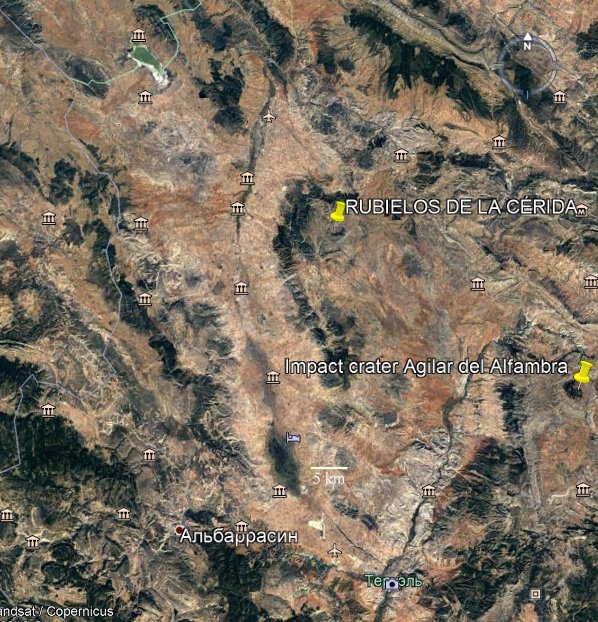
Спутниковая фотография кратера из Google Earth.
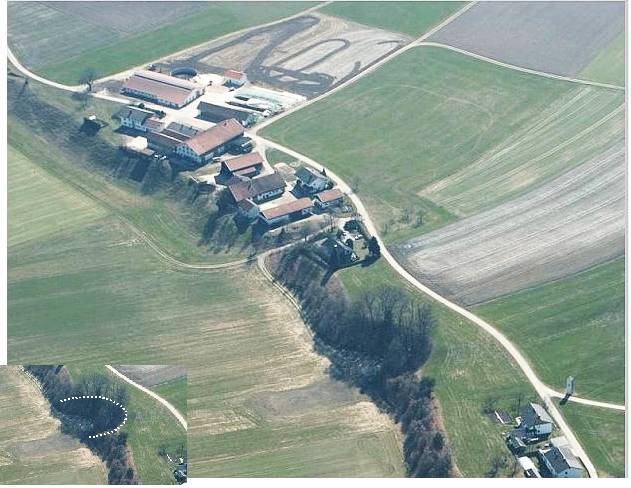
Crater 024 near the town of Marktl is one of the most remarkable craters within the impact strewnfield. It is virtually punched into the embankment of the Inn river and today still preserved as a 50 m-diameter semi-crater. Originally, there was a rim wall meanwhile leveled by farming the land. Photo: Gerhard Benske.
(WordPress).
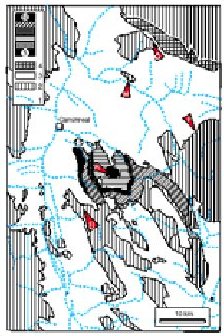
Геологическая карта кратера
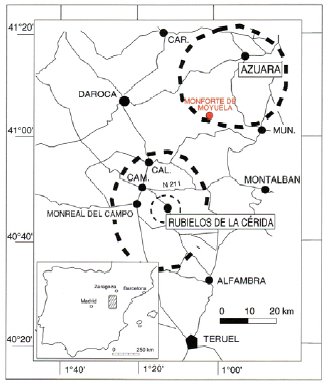
Топографическое расположение кратеров Азуара и Рубилос де ля Кэрида
| |
(ERNSTSON CLAUDIN IMPACT STRUCTURES - METEORITE CRATERS).
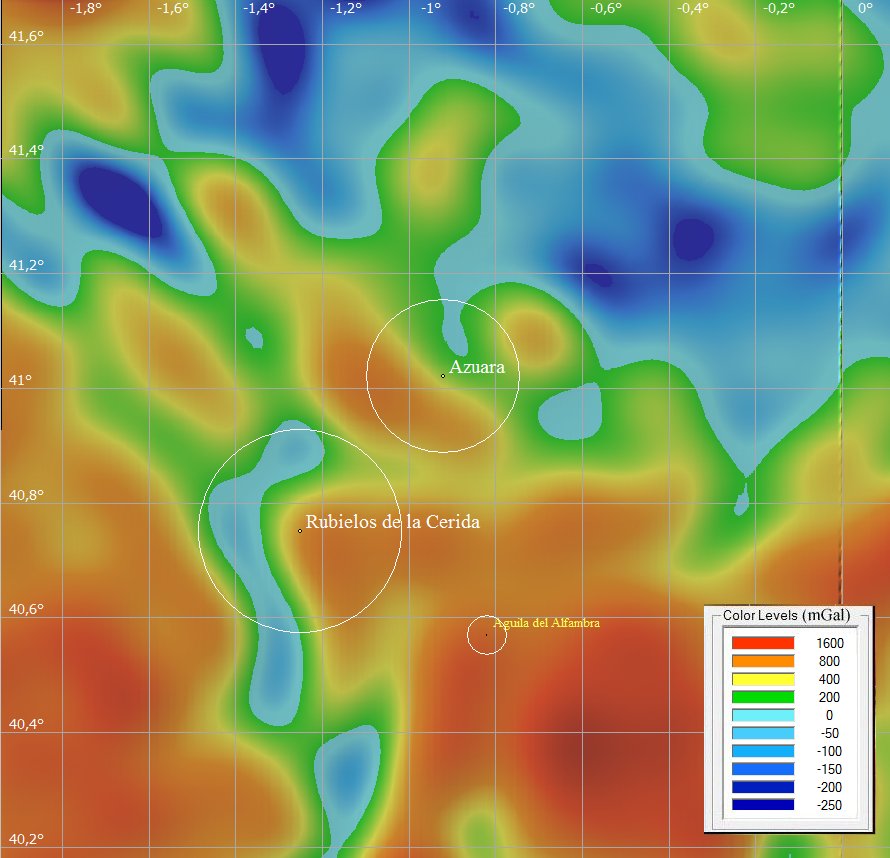
Аномалии силы тяжести в районе кратера (получено по данным GLOBAL MARINE GRAVITY V18.1 средствами системы ENDDB).
На главную




